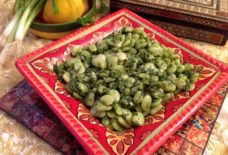Syrian Art in a Suitcase
SOURCE: VOA
Syrian-born artist Mohamed Hafez creates little worlds inside of suitcases.
One of his art works looks like a building that was blown open by a bomb. It has small pieces of clothing among the destruction to represent the people who once lived there.
“I think the human eye is fascinated by the detail of destruction,” he explains. We are always curious to find out what happened.”
Hafez’s art works show the damage caused by the seven-year civil war in his native Syria.
“There’s nothing glamorous about destruction,” Hafez says, “but I use it as a…way for me to heal and creatively weep over the destruction.”
Hafez is an architect who designs large, modern buildings. In his art work, however, he makes small versions of buildings, cars and other things.
His art show, called “Collateral Damage,” is being held at the Fairfield University Museum in Fairfield, Connecticut. It has artwork representing Syria before the war, Syria during the war and the experience of refugees. The show also has his most recent work, which examines Syrian people who have left their country.
Hafez’s representation of the refugee experience has won recognition in the past few years. One reason is that the small scenes are placed in real suitcases – ones once carried by real refugees as they fled.
“A lot of people came to me with their parents’ and grandparents’ suitcases. I’m talking about Jewish communities, Irish communities, German communities, Indian communities,” said Hafez. He added that the suitcases reminded people of their own immigrant history.
Some of the suitcases go back to the 1800s. As the “belongings of yesterday’s immigrants,” they play a part in telling “the story of today’s immigrants to remind us collectively that history could repeat itself,” Hafez said.
Hafez is an immigrant himself. He brings his own understanding of the refugee experience. Born in Damascus, Syria, he grew upin Saudi Arabia. He arrived in the U.S.15 years ago as an architecture student. He came on a single-entry visa, which meant he could not go home for the first eight years.
“This has caused a lot of homesickness and longing to the beautiful country that I have left. I started using…leftover materials from architectural model making. And I started remodeling old Damascus and old Aleppo in miniature form.”
Hafez believes he is providing something for “the American skylines” as a Syrian and a Muslim. Hafez said he is “proudly a member of (American) society. I call America my home.”
Hafez is fighting for his America through his art. He hopes to answer people who question the value of immigrants in America.
Museum visitor Tre Kayumba is an immigrant to the United States. He came from the Congo, but was raised in South Africa.
He said that Hafez’s artwork “speaks to the human condition,” and how disagreements “can result in total destruction.”
I’m Susan Shand.



